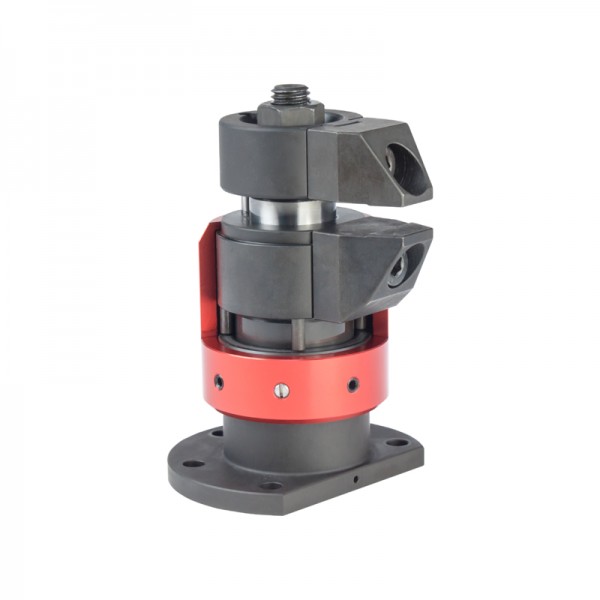

Halder - EH 23320.: Floating Clamps ‒ compact construction, combined clamping and locking M 12
The floating clamp is used to clamp and support additional clamping points on components.
The benefits of the floating clamp are:
- avoids vibration during the processing
- clamps ribs, beads and shackles to reinforce clamped components
- distortion-free clamping of raw parts
- compact version with reduced height.
Material
Adjustable body
- Aluminium, red anodised
Body
- Case hardened steel, nitrided, manganese phosphate treated and ground
Clamping Jaws
- Case hardened steel, nitrided, manganese phosphate treated
Assembly
- Mount the floating clamp (mounting holes for M 6, see drawing ) onto the device.
- Adjust the height limit stop and the rotating area with the sleeve and clamp with a set screw (4x WS 2.5). When setting the height limit, consider tolerance of workpiece.
Operation
- Push the floating clamp downwards.
- Pivot the clamping jaws in as far as possible. The floating clamp contacts the bottom of the work piece with a slight spring load.
- Tighten the floating clamp with a hexagonal nut (WS 18) having a min. torque of 15 Nm and a maximum torque of 30 Nm. In the clamping process, the workpiece is clamped and simultaneously supported.
- Releasing is done in reverse order.
Notes
For specific clamping situations, the standard clamping jaws supplied can be exchanged or replaced (see catalogue drawing: screw ISO 4762 - M8 - 12.9, M max. = 43 Nm).
Accessories
As an accessory, we offer clamping jaws with an increased clamping range, refer to 23320.0050-.0058, as well as pivot jaws, refer to 23320.0148-.0156.
Select a product

